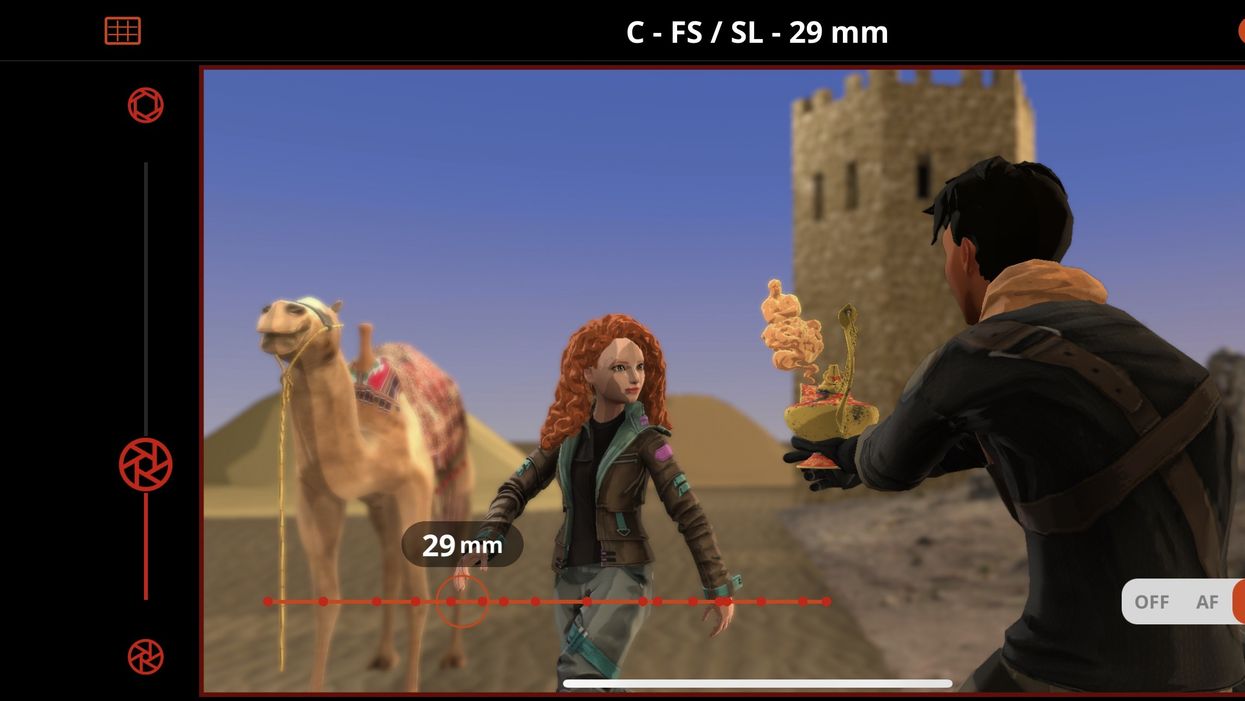Easily Create Previsualizations on Your iOS Device with Previs Pro
A robust 3D previs toolset comes to your iPad, or even your iPhone, with the new Previs Pro.

Previsualizing shots goes back to the beginning of movies, with hand-drawn storyboards having existed for a century or more. However, more sophisticated digital tools make more elaborate previsualization easier and more accurate than ever before, helping filmmakers plan ahead to make their shoot days faster and more organized.
While high-end previsualization tools are often proprietary to the companies that create them, there are new tools coming out for indies all the time, and into that fray comes the new Previs Pro for iOS.

From there you set up camera angles for various shots, and you can change angles and focal lengths at will, getting a good sense of how your master and coverage might play out and cut together. You can adjust the depth of field of your lenses, previewing what various apertures might look like in terms of mood and feel. You can even, surprisingly, apply the rough equivalent of a color grade to help give your boards or individual scenes a "mood."

On top of the 3D functionality, you can also import assets including backgrounds to the application, meaning you can go to your location, shoot photoboards, then bring them into Previs Pro to have accurate location backgrounds in your photoboards.
While it of course won't be perfect at recreating field of view (you'll be stuck with the lens perspective of the original photo), it will offer real benefits in forcing filmmakers to think through the creative challenges of each individual location in particular, not just in the abstract.

The other fascinating feature is the use of Apple AR (Augmented Reality) technology to do previs in your actual location.
This feature overlays your digital actors against the scene from your live camera, allowing you to plan out scenes on set. While this doesn't seem like it would be useful on a shoot day (you'd be better off doing photoboards during a blocking rehearsal with the actual actors), it could be tremendously useful on a scout day when the director and DP are out together without the actors. This could even help create layouts that would help the art department and lighting set up a location ahead of time. For instance, while the director/DP are wrapping another scene with concrete information on where performers and key set items will be.
One small frustration is the lack of basic animation tools. In reality, the vast majority of shots have movement in them, either of the characters or of the camera. While we know it's an early product, hopefully some simple animation toolsets will come online that will allow for the creation of very simple animatics to show some camera movement and actor movement in the shot.
The tool is very useful as is, but if they are continuing development, that is something we think will be tremendously beneficial. In the meantime, you would simply create multiple storyboards for each "step" in a camera or blocking move and then indicate in the notes that the shots are tied together. There are even arrows you can include to indicate motion in the board itself. It's not a dealbreaker by any means, just a feature we hope they are able to integrate in the future.
Using it on our phone was not difficult, though of course, the larger screen of an iPad would be more useful. Our iPad was too old to run it. We fired up the app on the new M1 Apple MacBook Pro and did some testing there. There are some simplifications that the designers made to make it work on a phone, but they feel like fair tradeoffs.
For instance, the 3D models are somewhat customizable, but they aren't fully posable armatures. You select from a menu of prebuilt poses. For most previs, this will be enough to give the idea of what you need to communicate to the team. Users used to high-end previs tools might find the limits frustrating, but if you are an indie for whom previs has traditionally been out of the budget, the toolset offers a good amount of power with relatively simple controls, and it's exceptionally easy to use.
Overall it's an impressive amount of functionality to be packed into a small package. You can find out more over on Previs Pro website.












